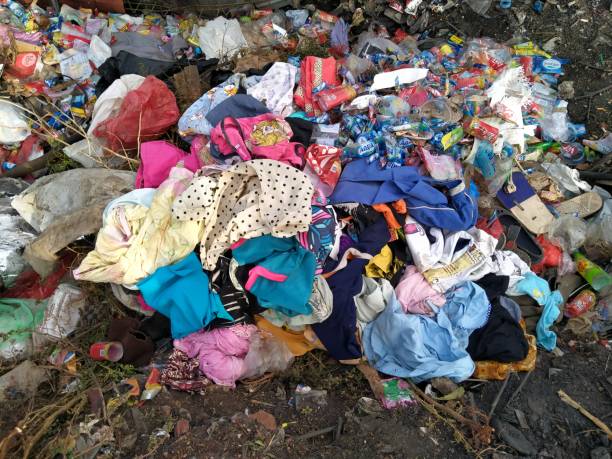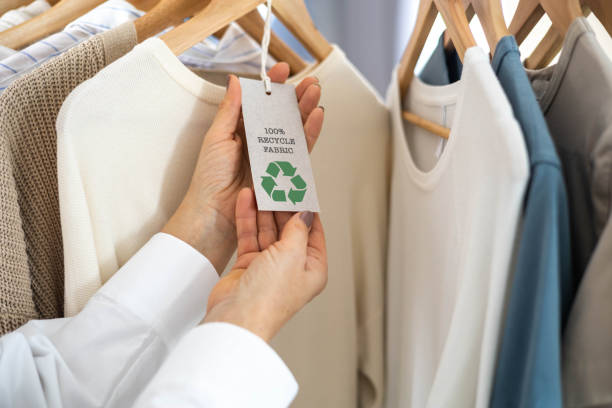Fast fashion negatively affects the environment, so fashion brands and designers are moving towards zero-waste fashion as a way to reduce carbon footprints.
Sustainable fashion has come to the forefront, thanks to consumer demand for eco-friendly and ethical practices. Customers and fashion enthusiasts will gain valuable insight and actionable tips about the principles and practices underlying sustainable fashion.
What is Zero-Waste Fashion?
Zero-waste fashion is an approach to clothing design and production that reduces waste at every stage of the fashion lifecycle. It’s a response to the significant environmental impact of traditional fashion, including climate change, resource depletion, and landfill waste.
An eco-friendly clothing zero-waste fashion designer uses sustainable resources and upcycled fabrics to create minimal-waste clothing. Both the environment and the fashion industry benefit from zero waste fashion.
Zero-waste style represents a new business model for the fashion industry. Traditionally, the fashion industry produces clothing, wears it for a few seasons, and then discards it. As we end up running out of resources and polluting our air, this model is not sustainable.
Instead of throwing away materials, zero waste fashion offers an alternative model. It is a more sustainable and environmentally friendly model. In the future, conscious fashion choices will be the norm. Get involved today!
The Problem of Traditional Fashion

Everybody loves fashion. There’s something fun and expressive about it, and it can make us feel good about ourselves. However, there is a dark side to the fashion industry.
Fast fashion has become a billion-dollar industry due to its low cost and quick turnaround. Since clothing is mass-produced so rapidly, it is in high demand and right on trend, but the environment is being ravaged by this.
This mass production not only causes climate change, it also contributes to landfill pollution. Textiles and fabrics pile high in landfills and they are very difficult to destroy. This adversely affects the environment and causes much controversy.
As one of the world’s largest polluters, the fashion industry generates 10% of the world’s carbon emissions and 20% of the world’s wastewater. Upcycling materials and using sustainable materials are ways to reduce these numbers ethically.
Why is Zero-Waste Fashion Important?
Zero waste fashion is important for several reasons:
- Traditionally, fashion is very wasteful: Clothing waste amounts to about 80 pounds per person per year, most of it ending up in landfills.
- Fashion is a major polluter worldwide: As the second largest consumer of water and carbon emissions in the world, it contributes 10% of global carbon emissions.
- The fast fashion industry has devastating effects on its employees: Poor wages and unsafe working conditions are common among them. Clothing production and consumption can be more sustainable through eco-friendly clothing. The fashion industry can reduce its environmental impact when clothes are made without waste.
Key Principles of Zero-Waste Fashion
- Optimizing patterns: The goal of sustainable fashion is to maximize the use of fabric in garment construction through intricate pattern making. To minimize leftover scraps, designers carefully plan and cut patterns.
- Modularity: With modular design, you can adapt your design to suit your needs. It is possible to combine or adjust modules of clothing to create different styles without adding additional pieces.
- Recycling and upcycling: The Zero Waste Fashion movement is dedicated to embracing sustainable practices and uses upcycled or recycled materials as much as possible. Reusing textiles reduces the need for new resources as well as gives them a new purpose.
- Efficient manufacturing methods: 3D knitting and laser cutting are examples of innovative production techniques that reduce waste. In addition to minimizing errors and excess material, these technologies provide precise cutting and shaping.
- Material selection: Ethical fashion prefers sustainable materials like organic fibers, recycled fabrics, and biodegradable materials. These materials have a lower environmental footprint than conventional textiles.
What is the Environmental Impact of Fashion?

The fashion industry contributes a large amount of pollution to the environment. Consider the following points:
- Water usage
It is estimated that the fashion industry consumes 79 billion cubic meters of water each year. Production of garments, dyeing fabrics, and growing crops are all water-intensive processes.
- Chemical pollution
Chemicals are widely used in textile production, posing an environmental threat. Bleaches, dyes, and finishes are harmful to ecosystems and human health as well as contaminating water sources.
- Waste production
In the fashion industry, discarded garments and fabric scraps contribute to a large amount of waste. It is common for textiles to end up in landfills, which results in environmental degradation and the emission of greenhouse gases.
- Carbon footprint
Global warming is a result of the fashion industry emitting greenhouse gases. Manufacturing processes, raw material transportation, and distribution of garments all contribute to this industry’s carbon footprint.
- Deforestation
Textiles made from wood and cotton contribute to deforestation, which disrupts ecosystems and biodiversity. The deforestation of forests contributes not only to climate change but also to the destruction of wildlife habitats.
With ethical fashion moving towards zero-waste and sustainability, it has become increasingly important to address these environmental issues.
To achieve a more sustainable future, the fashion industry must adopt eco-friendly practices and promote circular fashion initiatives.
Innovations in Zero-Waste Fabrics and Production Methods

1. Sustainable resources
- Organic materials: Compared to conventional cotton, these natural materials are derived from organic resources like hemp, cotton, and linen.
- Recycled materials: Making new yarns from post-consumer waste like discarded textiles or plastic bottles.
- Biodegradable fabrics: Modal, Tencel, and Piatex are biodegradable natural textiles that can replace conventional synthetic fabrics.
2. Production methods
- Using waterless dyes: The dyeing process uses less water with techniques such as air dyeing and digital printing.
- 3D printing and knitting: The methods allow manufacturers to produce garments directly from digital files with minimal waste.
- Producing on demand: Overstock and waste can be reduced in the fashion industry by tailoring production to meet actual demand.
Who are they Key Players and Initiatives in Zero-Waste Fashion?

1. Fashion brands
- Stella McCartney: She is committed to sustainability and has been a trailblazer in zero-waste fashion. Her brand emphasizes eco-friendly materials, circular fashion designs, and waste-reduction strategies.
- Eileen Fisher: This brand focuses on ethical and sustainable fashion. They have zero-waste initiatives like take-back programs for old clothing, upcycling seminars, and using recycled materials in their production processes.
- Patagonia: Although they are popular for their outdoor collections, they’ve also embraced eco-friendly clothing practices. They encourage customers to repair damaged clothing, buy less, and campaign for an eco-friendly planet.
2. Educational institutions
- Parsons School of Design (New York, USA): This school integrates sustainability and zero-waste principles into its fashion curriculum. Students learn about sustainable materials, circular fashion designs, and ethical production.
- London College of Fashion (London, UK): They have courses and workshops on conscious fashion choices. Also, they employ experts to teach students about sustainable sourcing, zero-waste pattern design, and responsible cloth production.
- Royal Melbourne Institute of Technology (RMIT) (Melbourne, Australia): RMIT has a research center that focuses on sustainable fashion. They encourage research on waste reduction, recycling, and the environmental impact of traditional fashion.
3. Industry collaborations
- Stakeholders: Some organizations bring together sustainable clothing brands, retailers, and suppliers to establish zero-waste standards.
- Environmental organizations: NGOs collaborate with fashion players to educate people about the dangers of fast fashion and advocate for zero-waste alternatives.
- Government: Governments now know the importance of ethical fashion. Some countries have incentives and regulations for zero-waste practices, such as tax breaks or limits on textile waste disposal.
- Collaborative initiatives: Zero-waste initiatives like the “Circular Fashion Runway” unite fashion brands, NGOs, and academia. This event brings sustainable designers, researchers, and policymakers together to showcase ethical fashion and advocate for sustainability in the industry.
Related Reading: How to get Sustainable Fashion Influencers for your Brand
Final Words
Choosing zero-waste fashion isn’t just a trend; it’s an active move towards a more ethical and sustainable fashion industry. Style and environmental responsibility can coexist when garments are designed and manufactured in new ways. The shift towards conscious fashion choices requires our support as consumers.
As a result, sustainable fashion has an impact that reaches beyond aesthetics; it addresses environmental concerns, promotes resource conservation, and champions ethical practices.
The choices that consumers make shape this positive shift, ensuring fashion is stylish, conscious, and responsible. It’s time to embrace zero-waste fashion!
FAQs
What is zero-waste fashion?
A fashion is zero waste when it focuses on sustainable methods of cloth design and production. Such methods reduce waste throughout their chain of production, from material sourcing to final production.
What are zero-waste fashion design techniques?
Before cutting, think creatively to have an effective zero waste design. Consider zero-waste layouts and draping textiles to craft innovative and experimental patterns.
Why is zero-waste fashion important?
Since the fashion industry contributes so much to pollution and waste, zero waste fashion is important. A zero-waste lifestyle reduces our environmental impact and promotes sustainability.
How does Zero Waste Fashion benefit the environment?
Using sustainable Fashion reduces the fashion industry’s environmental impact by minimizing fabric waste. Therefore, this will reduce carbon emissions, conserve resources, and mitigate pollution.
Is Zero Waste Fashion more expensive?
Sustainability and ethical practices may increase the initial cost, but they often outweigh the costs in the long run, both environmentally and economically.
How can consumers support Zero-Waste Fashion?
You can help ethical fashion by buying from sustainable clothing brands, reusing your clothes, and being mindful of your consumption of clothing. It is also crucial to educate yourself about zero-waste fashion.







